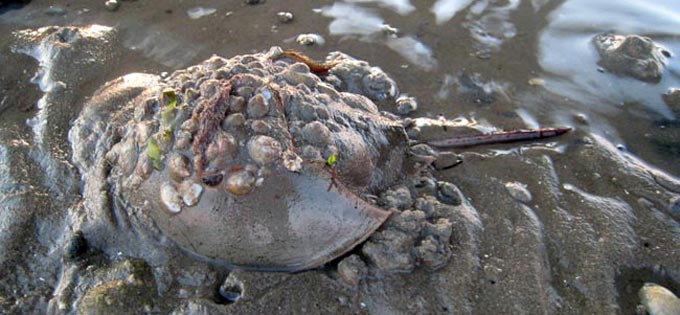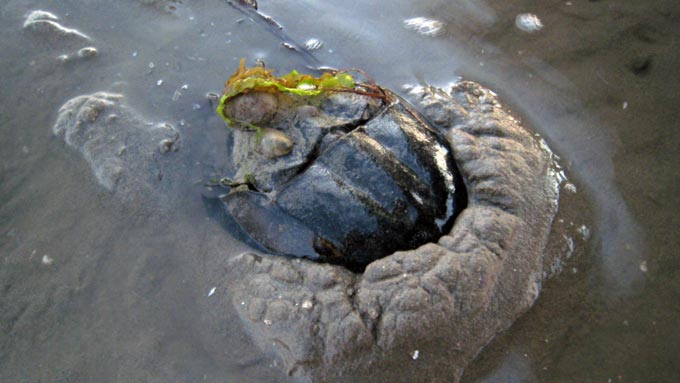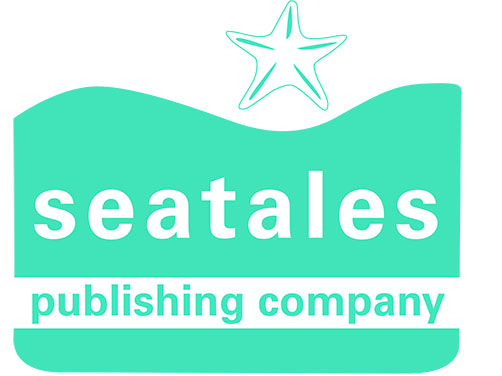Horseshoe Crabs & Human Relationships

Horseshoe Crabs & Biomedical Research
Horseshoe crabs have become extremely important in biomedical research in three significant ways. First, they aren’t royalty, but horseshoe crabs do have blue blood! This is because horseshoe crab’s blood has a copper base that appears blue when oxygen is present, whereas when our iron-based blood has oxygen present, it appears red. But even more special is the fact that horseshoe crab blood clots when it comes in contact with harmful gram-negative bacteria. This finding has led to the LAL Test, which helps to expose bacterial contamination of injectable and intravenous drugs. LAL testing is also used to screen prosthetic devices such as heart valves, and hip replacements for bacterial contamination before use in surgical procedures.
Secondly, horseshoe crabs have been instrumental in advancing eye research. They have two large, compound eyes that are simply constructed, and an extremely accessible optic nerve. Horseshoe crabs are aiding researchers in understanding how signals transmitted from the eyes and the optic nerve are decoded, which could lead to making strides in correcting disorders in human vision. Studying how the horseshoe crab processes visual cues could even lead to an improvement in a human eye disease called retinitis pigmentosa, or tunnel vision.
Finally, the horseshoe crab’s shell is made of a tough, yet flexible substance called chitin, which believe it or not, has wound healing properties. Chitin is used in sutures that are absorbed by the body, in dressings for wounds, in antibacterial sponges, in artificial blood vessels, in contact lenses… and the list goes on and on. The horseshoe crab really is an exciting ally of human beings.

Native Americans and the Horseshoe Crab
Back when this country was first settled, Native Americans used horseshoe crabs as a food source. Most of the meat in a horseshoe crab can be found in the opisthosoma, or middle section of the horseshoe crab. They also may have eaten a few of the organs in the first section of the horseshoe crab, or prosoma. But Native Americans are noted for not wasting a bit of an animal that provides them with food. This was the case with the horseshoe crab. The shell of the horseshoe crab was used to bail out their boats. The telson, or tail of the horseshoe crab was attached to Native American spears to give them a sharp point. Then Native Americans would grind the shell of the horseshoe crab, which is rich in nitrogen, to use as fertilizer to grow crops.
Native Americans taught the new settlers how to use horseshoe crab shells as fertilizer, and the fertilizer industry used ground up horseshoe crab shells until the 1950’s. This practice was discontinued partially because chemical fertilizer became more popular and partially because from the 1920’s on, there was a decline in the horseshoe crab population. Horseshoe crabs also have been fed to chickens and pigs as an inexpensive food source in the past. Today, horseshoe crabs are used as bait to catch eel and conch, which raises new concerns about an alarming decline in the horseshoe crab population. As an invaluable resource to the biomedical field, as well as an important natural food source for loggerhead turtles and shorebirds, it is even more important to find ways to protect the horseshoe crab population.
